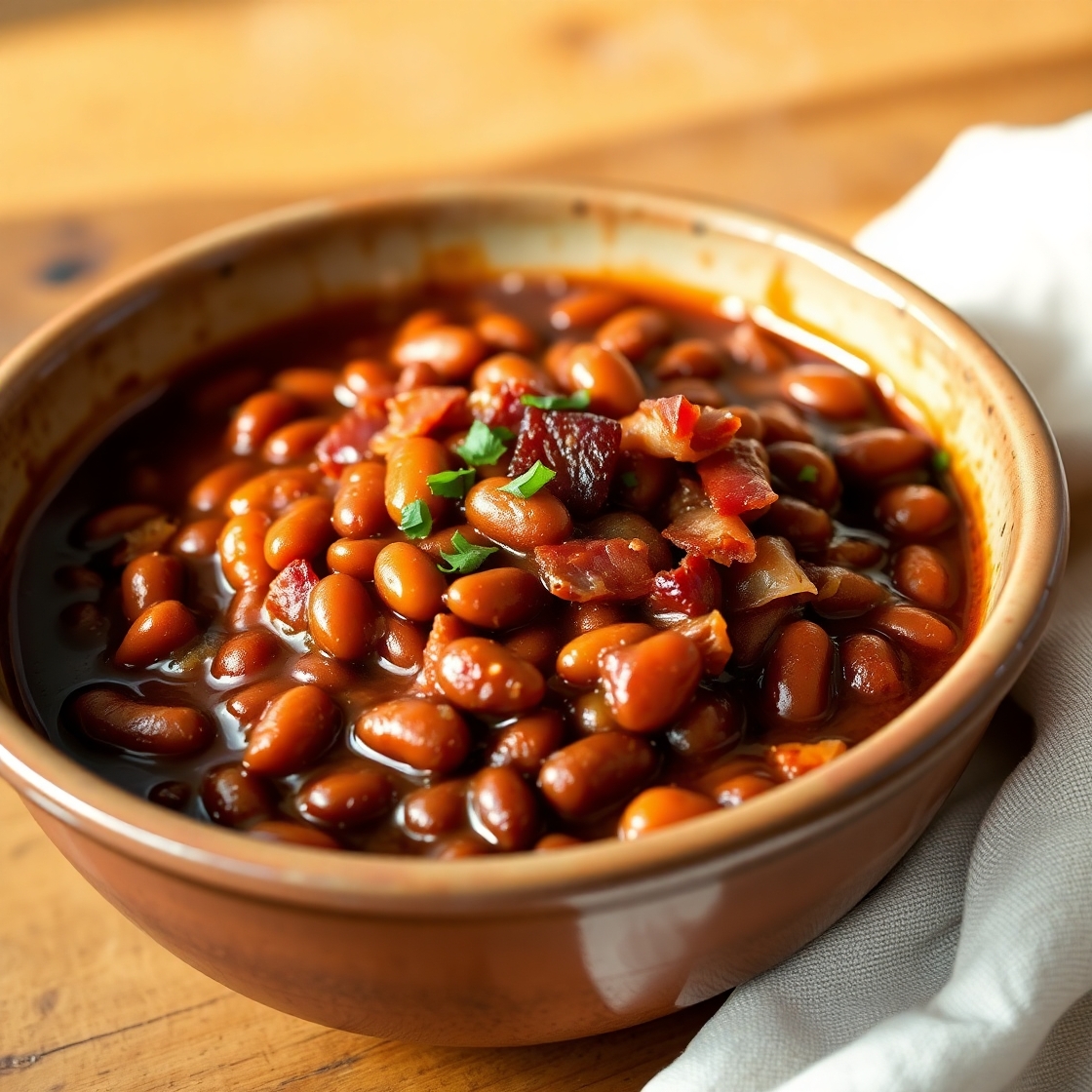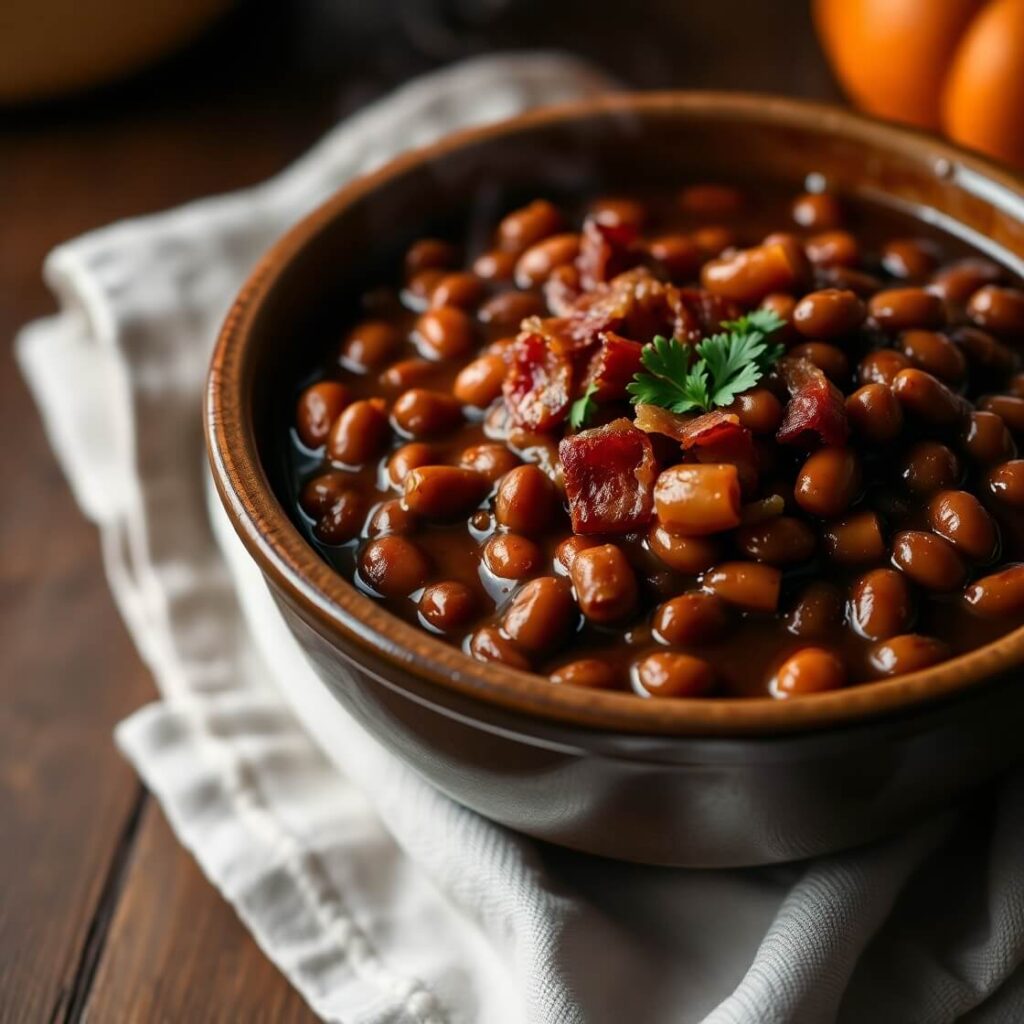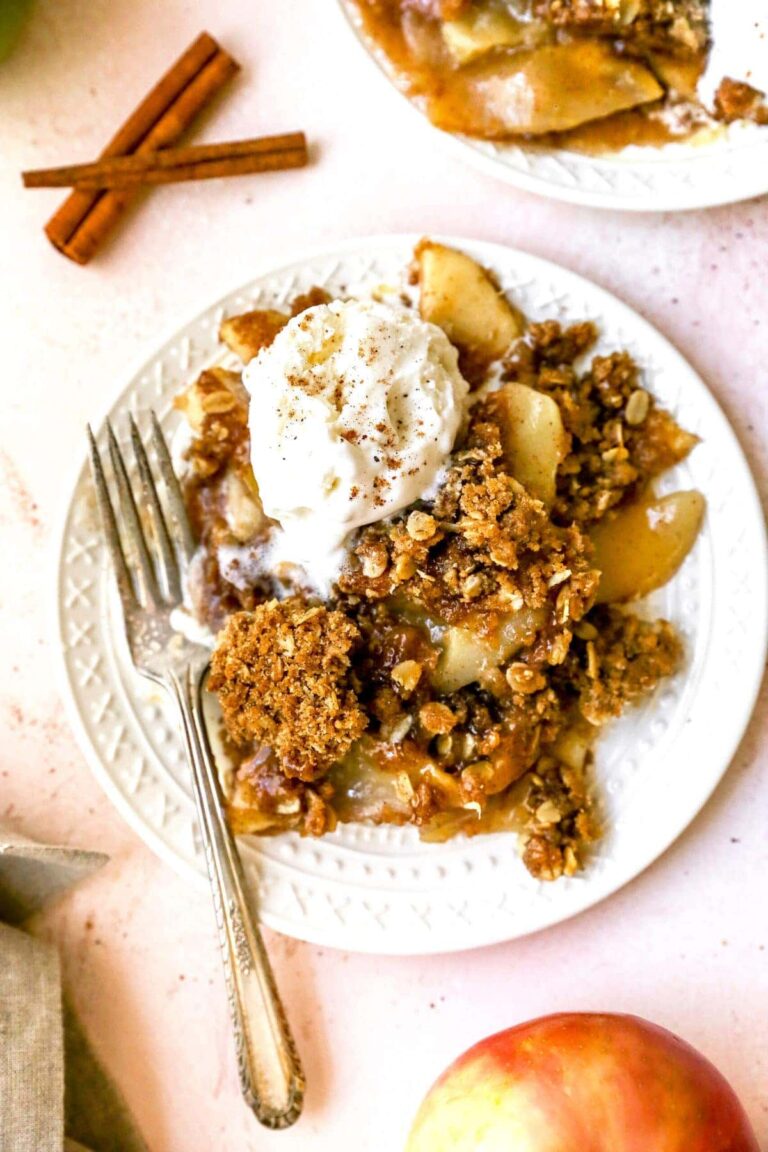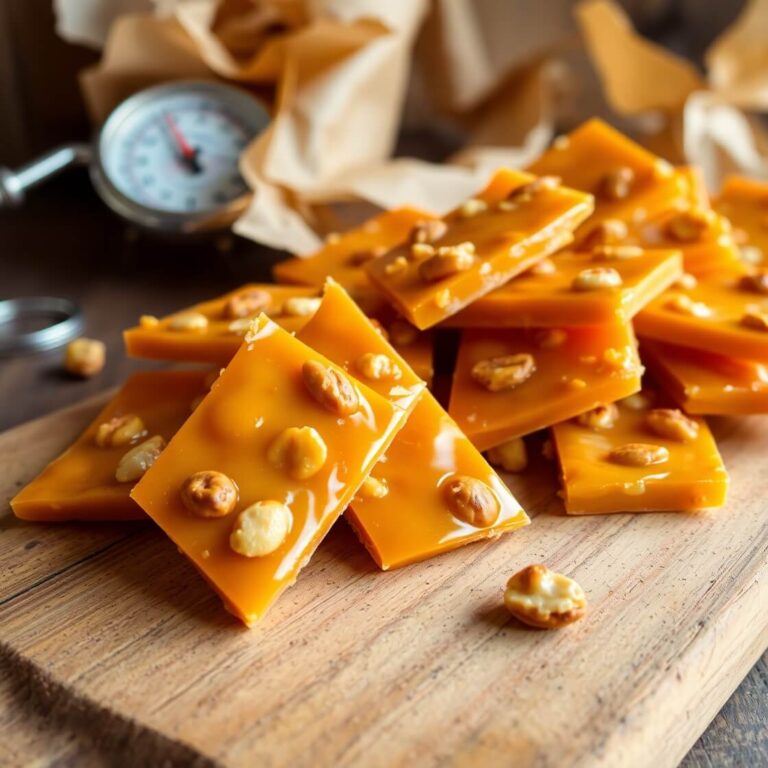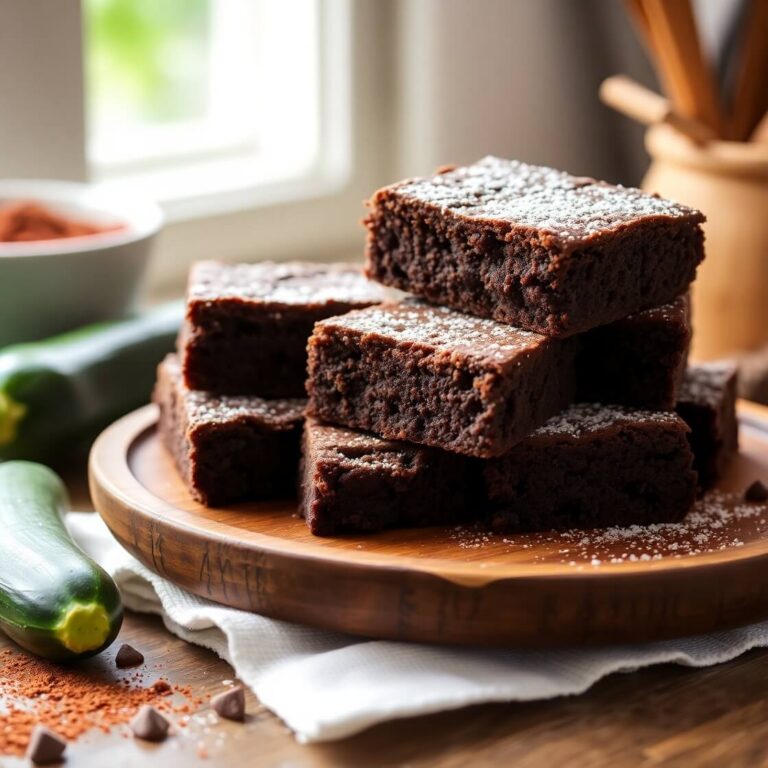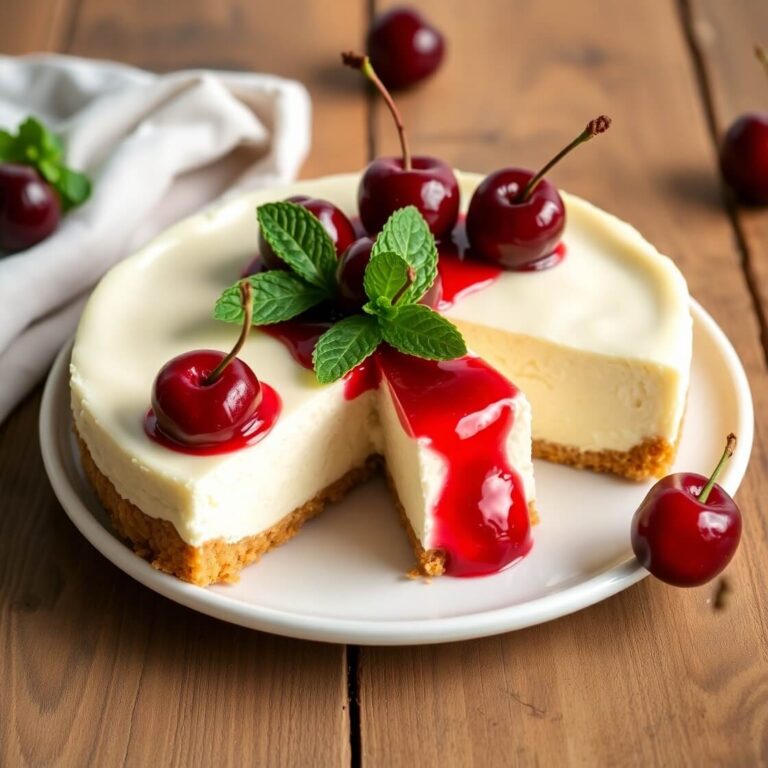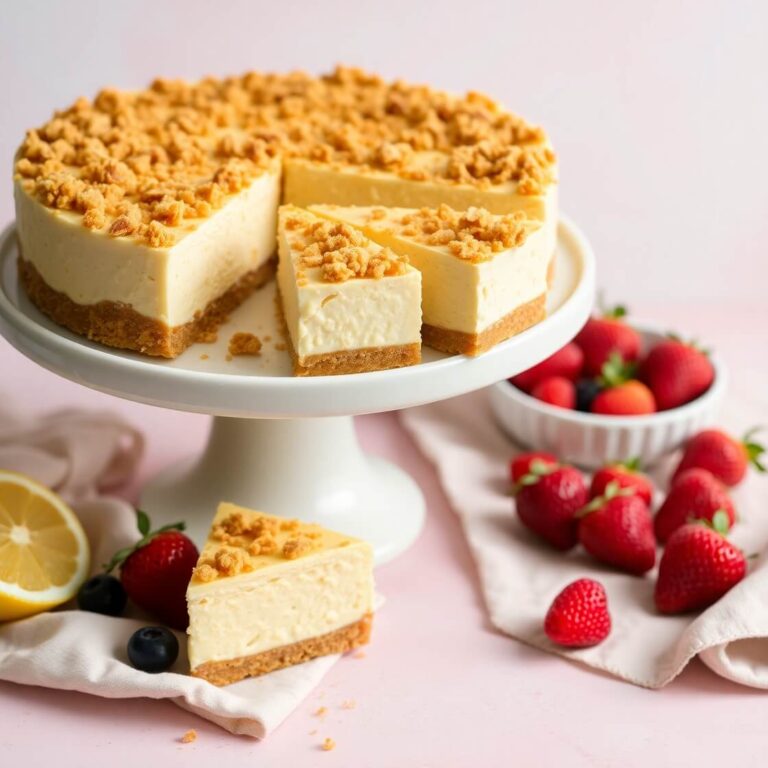There’s something deeply comforting about a pot of slow-cooked homemade baked beans. It reminds me of family cookouts, cozy Sunday afternoons, and potluck dinners where everyone brings a dish, but the baked beans are always the first to go.
This recipe is all about bringing those nostalgic moments back to life in your kitchen, no matter the season. Whether you’re serving them alongside BBQ ribs or just spooning them into a bowl for lunch with a hunk of cornbread, these beans are a true kitchen staple.
And if you’ve only ever had baked beans from a can, you’re in for a serious treat. This version is richer, smokier, and far more satisfying.
Why I Love This Recipe
There’s a good reason homemade baked beans are worth the time—they transform humble pantry ingredients into something deeply flavorful, sweet, savory, and smoky all in one bite.
Unlike store-bought versions, this recipe allows you to control the depth of flavor. Want it sweeter? Add a touch more molasses. Prefer a smoky edge? Add extra smoked paprika or some bacon. Every element of this dish is customizable, which means it’s perfect for family dinners, summer barbecues, or even as a make-ahead meal prep option.
It’s also incredibly budget-friendly. With just a bag of dry beans, a few aromatics, and some common condiments, you get a dish that can feed a crowd and freeze beautifully.
This is the kind of recipe you’ll find yourself turning to again and again—not just because it’s delicious, but because it’s comforting, satisfying, and incredibly practical.
Ingredients for Homemade Baked Beans
To get that classic deep, rich flavor of baked beans, you’ll need a combination of sweet, smoky, tangy, and savory ingredients. Here’s what you’ll need to gather:
- Dried navy beans or great northern beans – The traditional choice for baked beans. They hold their shape well but become tender and creamy once cooked.
- Bacon – Adds a smoky, salty depth. You can substitute with smoked turkey or leave it out for a vegetarian version.
- Onion and garlic – The aromatic base that lays the flavor foundation.
- Molasses – The signature sweetener in baked beans. It adds a warm, earthy sweetness you can’t replicate with plain sugar.
- Brown sugar – For added sweetness and caramel notes.
- Tomato paste – A touch of acidity to balance the sweetness.
- Dijon mustard – For a bit of tang and a subtle kick.
- Apple cider vinegar – Helps cut through the richness and rounds out the flavors.
- Smoked paprika – Brings a deep, smoky flavor that mimics a long cook over a campfire.
- Water or broth – Helps simmer the beans to tenderness while infusing them with flavor.
- Salt and pepper – To taste, added toward the end so you don’t toughen the beans while cooking.
Each ingredient plays a role, and together they build a flavor that’s both nostalgic and bold. If you’ve never cooked with molasses before, this is the perfect recipe to start with—it’s the soul of the dish.
How Much Time Will You Need
Homemade baked beans are not a quick-cook meal—but the reward is more than worth it. Here’s a breakdown of how much time you’ll need:
- Prep Time: 15 minutes
- Soaking Time: Overnight (or quick-soak method: 1 hour)
- Cook Time: 2 to 2.5 hours on the stovetop or 3 to 4 hours in the oven
- Optional slow cooker method: 6 to 8 hours on low
The hands-on time is minimal, but be sure to plan ahead, especially if you’re using dried beans. The longer simmer means the flavors get a chance to meld perfectly.
How to Make This Homemade Baked Beans
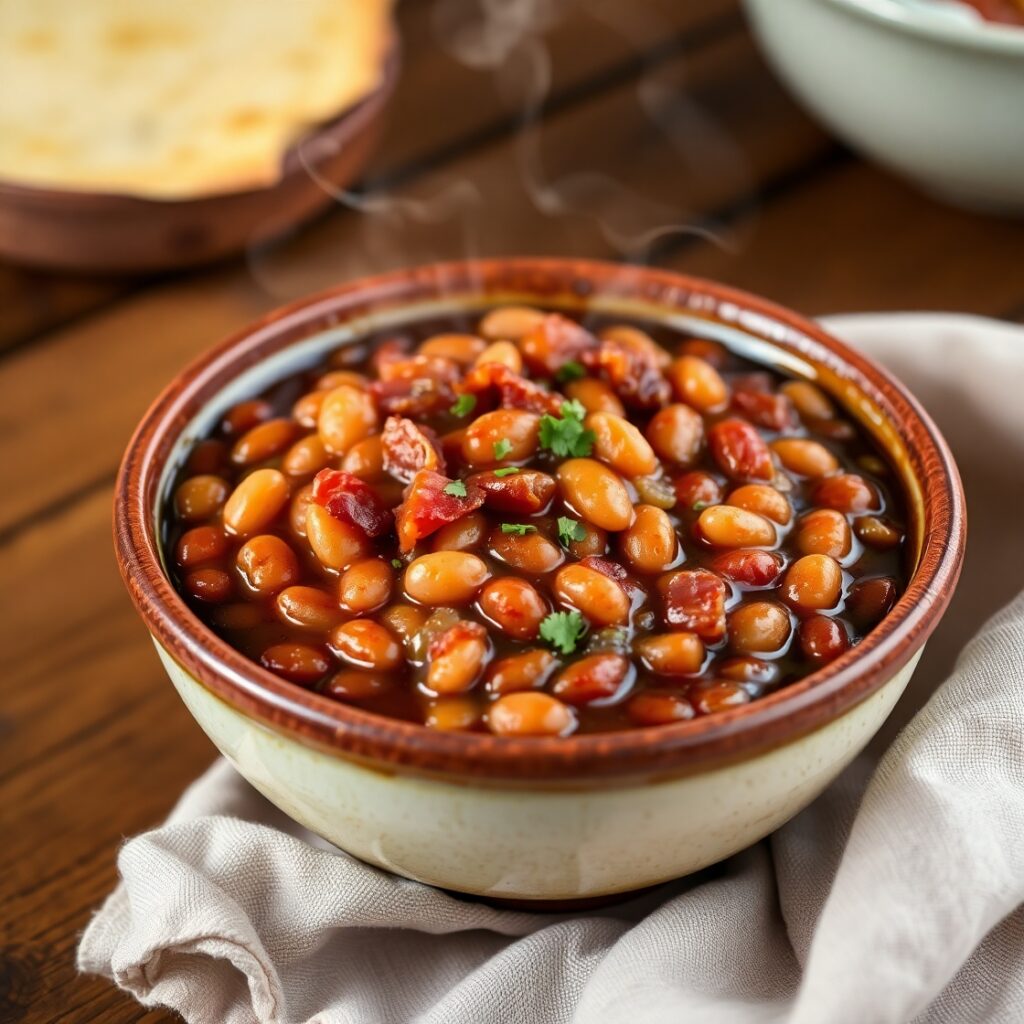
Here’s how to make this recipe from scratch. Follow each step carefully and you’ll be rewarded with a pot of beans that’s miles better than anything from a can.
Step – 1: Soak the Beans
Rinse 1 pound of dried navy beans under cold water, removing any debris. Place in a large bowl and cover with water by at least 2 inches. Let them soak overnight.
Quick soak method: Bring beans and water to a boil, then remove from heat and let them sit for 1 hour.
Step – 2: Cook the Beans
Drain and rinse soaked beans. Place them in a large pot and cover with fresh water. Bring to a boil, then reduce to a simmer. Cook uncovered for about 45 minutes to 1 hour, until beans are just tender. Drain and set aside.
Step – 3: Prepare the Flavor Base
In a Dutch oven or large heavy pot, cook 6 slices of chopped bacon over medium heat until crispy. Remove with a slotted spoon and set aside. Leave about 1 tablespoon of bacon fat in the pot.
Add 1 finely diced onion and sauté for 5 minutes until soft and translucent. Add 3 minced garlic cloves and cook for another 1 minute.
Step – 4: Build the Sauce
Add the following to the onion and garlic mixture:
- 1/3 cup molasses
- 1/4 cup brown sugar
- 3 tablespoons tomato paste
- 2 teaspoons Dijon mustard
- 1 tablespoon apple cider vinegar
- 1 teaspoon smoked paprika
- Salt and black pepper to taste
- 2 cups water or broth
Stir until the mixture is smooth and bubbling. Add cooked bacon back to the pot.
Step – 5: Combine Beans and Sauce
Stir the cooked beans into the sauce. Make sure all beans are coated well. If needed, add more water to ensure the beans are mostly submerged.
Step – 6: Bake Low and Slow
Cover the Dutch oven with a lid or foil and bake at 300°F (150°C) for about 3 to 4 hours. Stir occasionally, and add water if they get too thick.
Alternatively, simmer gently on the stovetop for 2 to 2.5 hours, stirring occasionally.
Step – 7: Final Taste and Texture
The beans should be tender and saucy but not soupy. If the sauce is too thin, uncover and bake for another 30 minutes. Taste and adjust salt, sugar, or vinegar as needed before serving.
Substitutions
One of the best things about this recipe is how adaptable it is. Here are a few smart substitutions to suit your pantry or dietary needs:
- Beans: Swap navy beans for pinto, great northern, or cannellini beans. Canned beans work too—just skip the soaking and initial boiling steps.
- Sweetener: No molasses? Use maple syrup or dark corn syrup, though the flavor will be a little lighter.
- Meat-free: Skip the bacon and use a tablespoon of olive oil with a touch of liquid smoke for that smoky depth.
- Low-sugar: Reduce the brown sugar or replace with a low-glycemic sweetener like coconut sugar or a sugar substitute.
- Tomato-free: If tomatoes aren’t your thing, reduce the tomato paste and increase vinegar and mustard for acidity.
Each of these swaps allows you to tailor the dish to your needs without losing its soul-warming charm.
Best Side Dishes for Homemade Baked Beans
While baked beans can easily stand alone, pairing them with the right side dishes elevates the whole experience. Here are three classic options:
- Cornbread: Slightly sweet and crumbly, cornbread is the perfect side to soak up that rich sauce.
- Grilled Hot Dogs or Sausages: A classic summer pairing that’s always a hit, especially at BBQs.
- Coleslaw: Its crunchy, tangy freshness balances the richness of the beans beautifully.
Serving and Presentation Tips
When it comes to serving homemade baked beans, presentation might not be the first thing on your mind—but don’t underestimate how a little effort can turn this humble side dish into a standout feature on your table.
Use a rustic, oven-safe dish like a cast iron skillet or an enameled Dutch oven to serve directly from the oven. It keeps the beans warm and adds a cozy, homey vibe. For parties or potlucks, spoon them into a stoneware crock or a serving bowl with a ladle.
Garnish with a sprinkle of fresh parsley or thyme for color and a bit of contrast. A small drizzle of olive oil or a few cracks of fresh pepper just before serving also elevates the look.
If you’re serving as part of a cookout buffet, label your dish with a handwritten chalkboard sign or a simple name card so guests know what they’re diving into.
Tips and Tricks to Make This Recipe Even Better

The best baked beans are rich, tender, and infused with layers of flavor. Here are some tried-and-true tips to ensure yours are unforgettable:
- Don’t skip the soak. Soaking the beans helps reduce cooking time and improves digestibility. For extra softness, add a teaspoon of baking soda to the soaking water.
- Cook low and slow. Long, gentle simmering helps the beans soak up all the sauce and develop their signature velvety texture.
- Taste as you go. After an hour or two of cooking, taste the beans. Need more tang? Add vinegar. Too sweet? A splash of mustard or lemon juice can balance it.
- Let it rest. Like chili or stew, baked beans taste even better the next day. Make them ahead and let the flavors deepen overnight.
- Use broth instead of water. This simple switch makes every bite richer and more flavorful.
- Layer your ingredients. When baking in the oven, layering the bacon, onions, and sauce between layers of beans can intensify the overall flavor.
Common Mistakes to Avoid
Homemade baked beans are simple, but a few common missteps can lead to disappointment. Here’s what to watch out for:
- Adding salt too early. Salt can toughen beans if added before they’re fully cooked. Always wait until the end to season fully.
- Using the wrong beans. Stick to small, creamy beans like navy or great northern for the best texture. Large beans can become too mushy or break apart.
- Skipping the soak or undercooking. If you skip the soak and try to speed things up, your beans may stay tough no matter how long you cook them.
- Burning the sauce. Keep an eye on the bottom of the pan if you’re cooking on the stovetop—molasses and sugar can burn easily.
- Over-sweetening. Taste before adding all your sweeteners. Depending on your molasses or tomato paste, the sweetness level can vary.
How to Store It
Homemade baked beans store beautifully, making them ideal for meal prep or leftovers.
- Refrigerator: Let the beans cool completely. Store in an airtight container for up to 5 days. The flavor often gets better with time.
- Freezer: Portion into freezer-safe containers or zip-top bags. Flatten the bags to save space and freeze for up to 3 months. Thaw in the refrigerator overnight and reheat on the stove with a splash of water or broth to loosen the sauce.
- Reheating: Warm gently on the stove over low heat or microwave in 30-second intervals, stirring between each until hot throughout.
FAQ
Can I use canned beans instead of dried beans?
Yes, you can. Drain and rinse canned beans and skip the soaking and boiling step. Reduce the cooking time by half since canned beans are already cooked.
Are baked beans healthy?
Yes—especially homemade. They’re full of fiber and protein, low in fat, and you control the sugar and salt levels. To make them healthier, reduce the sugar or skip the bacon.
Can I make this vegetarian or vegan?
Absolutely. Omit the bacon and use olive oil instead. Add a dash of smoked paprika or a splash of liquid smoke for that smoky flavor.
Can I cook baked beans in a slow cooker?
Yes, this recipe adapts well to a slow cooker. Cook on low for 6–8 hours or high for 4–5 hours, checking toward the end to avoid over-softening.
What type of molasses should I use?
Use unsulphured molasses for the best taste. Avoid blackstrap molasses unless you love a very strong, bitter flavor—it can overpower the dish.

Homemade Baked Beans Recipe
A classic comfort dish that never goes out of style. These homemade baked beans are sweet, smoky, and deeply flavorful. Made with tender navy beans, molasses, smoky bacon, and a perfectly seasoned tomato-based sauce, this recipe brings a slow-cooked richness that’s far beyond anything you’ll find in a can. Perfect for potlucks, BBQs, or as a make-ahead meal, this is the baked bean recipe you’ll turn to again and again.
- Total Time: 3 hours 15 minutes
- Yield: 6–8
Ingredients
- 1 lb dried navy or great northern beans
- 6 slices thick-cut bacon, chopped
- 1 medium onion, finely chopped
- 3 garlic cloves, minced
- 1/3 cup molasses
- 1/4 cup brown sugar
- 3 tablespoons tomato paste
- 2 teaspoons Dijon mustard
- 1 tablespoon apple cider vinegar
- 1 teaspoon smoked paprika
- 2–3 cups water or broth
- Salt and black pepper, to taste
Instructions
- Soak beans overnight in plenty of water or use a quick soak method. Drain and rinse.
- Cook beans in a large pot of fresh water for about 45–60 minutes, or until just tender. Drain and set aside.
- In a Dutch oven, cook bacon until crisp. Remove and set aside. Sauté onion in the bacon fat until translucent, then add garlic and cook briefly.
- Stir in molasses, brown sugar, tomato paste, mustard, vinegar, smoked paprika, salt, and pepper. Add water or broth and stir well.
- Return bacon to the pot and add the cooked beans. Mix well.
- Cover and bake at 300°F for 3–4 hours, checking occasionally and adding more water if needed. For stovetop cooking, simmer gently for 2–2.5 hours.
- Adjust seasonings and serve warm.
Notes
- Canned beans can be used as a shortcut—just reduce cooking time.
- Vegetarian? Skip the bacon and use olive oil with a dash of liquid smoke.
- For extra richness, swap water for broth.
- Taste and adjust sweetness and acidity toward the end of cooking.
- Prep Time: 15 minutes
- Cook Time: 3 hours
- Category: Side Dish
- Method: Baked/Stovetop
- Cuisine: American
- Diet: Vegetarian
Nutrition
- Serving Size: 6–8
- Calories: 280
- Sugar: 12g
- Sodium: 420mg
- Fat: 7g
- Saturated Fat: 2g
- Unsaturated Fat: 5g
- Trans Fat: 0g
- Carbohydrates: 42g
- Fiber: 9g
- Protein: 12g
- Cholesterol: 12mg

